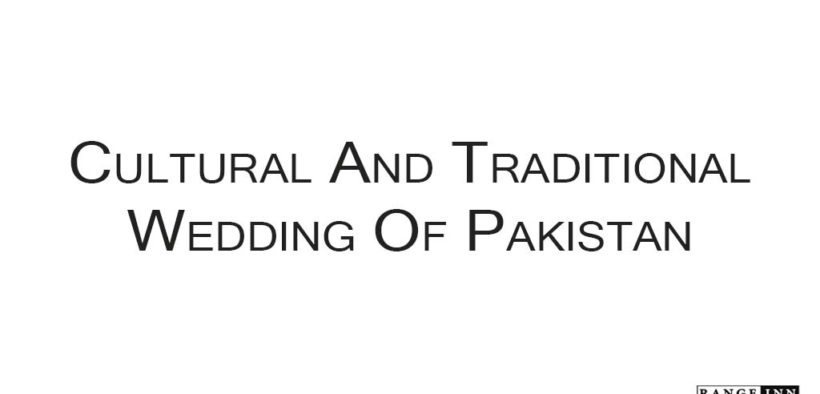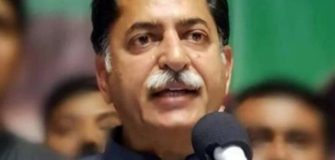Cultural and traditional wedding of Pakistan

In Pakistan marriage happens between two people and it means two people becoming one by signing a contract. It is universal, it happens all around the globe, but what makes Pakistani marriage unique and distinct from others is its culture. So, we can say marriage is the same but a wedding in Pakistan is a different concept, because of the existence of unique festivities, colors and charms and a unique aura. Every family member takes out special time and invests in it because it is a special cultural aspect that occurs like merriment. People just not simply start their preparations a week before the wedding, but two or three months before the actual event. Clothes and other accessories and matching embellishments are bought, not just for a bride and groom, but the whole family takes active participation in buying stuff for themselves as well. Invitation card designs are selected and imprinted with the name of the bride and groom with the quotation in a stylish font, “Marriages are made in heaven but are celebrated on earth”.
An elder member of the family like Abu G (Father) and elder brother made reservations for the hall, banquets and marquees three months before and the menu is decided. When cards come they are sent to relatives, friends and other acquaintances. Everything seems surreal and magical with vibrant colors in it. Cousins and siblings prepare special dance performances for the events like Mehndi, Barat and Walima. Songs are decided according to the nature of the event and practice of dance takes place two, or three weeks before, in order to dance in harmony on the actual day of the performance. Dholaki takes place a week before when everybody gathers, particularly women, they sing traditional wedding songs and snacks are served. Some famous Mehndi songs include, “Mehndi ki ye Raat”, “Lathe di Chadar” etc. Tapas (Folk songs) are other traditional songs that are sung with the drum (beat) of dholak, like old aunties sing, “Kala Shah Kala”, and “Chita kukar baneray Tay”. If cousins decide on a theme wedding then the same dress code is followed among girls and among boys, decoration is also done by keeping in mind the theme, on Mehndi day girls usually wear yellow dresses with gotay ka kaam (traditional embellishments on clothes) and khussa (traditional shoes), whereas boys wear Kurta Pajama. Henna is spread over the palms of the bride.
When the mehndi rasam (festivity) starts betel leaf is put on the bride and groom’s hand and then elder family members put henna (Mehndi) on it and put oil on the bride and groom’s heads and put Mathai (traditional sweets) in their mouths. Food is served by keeping in view the menu which is mostly done in the mehndi function. Cousins carry the plates of mehndi with candles in them, take them, walking through the aisle beside the bride and groom’s friends dancing and doing the bhangra by circling around him.
Barat is a very significant event in weddings because it brings change both in groom and bride life, they have to vow to take each other’s responsibility, so it is also celebrated in a colorful, vibrant way. The bride wears a lehenga (traditional wedding dress) of dark red color or some bright color because it is the new beginning of their life, so they wanted it to celebrate and red is the color of celebration in Pakistan, whereas groom wear sherwani (traditional wedding dress) with Qulah (traditional wedding cap) on his head. The Nikkah Khuwan comes and reads the Nikkah Nama in front of the bride first and she accepts by saying Qabool hai (agreement) thrice and then groom. The bride comes out of the bridal room with his brothers and father around and sometimes sisters holding her lehenga, then she sits beside the groom. The bride’s sisters then come with the cup of milk in their hands and in exchange for it ask the groom for money, and then the groom’s brothers intervene and try to negotiate. The hot meal is then served and all people gather around to eat it. Later, all people come and give salamis (money bags) and gifts to the bride and groom and the photographer takes their photo with them. The last part of Barat is Rukhsati which is the most sentimental time, as it is the time when the bride has to depart and receives blessings from her parents and elders to start her new life.
The next day is the day of Walima (reception) where the bride’s family and relatives are invited; it is a much lighter day where the bride smiles and wears a light-colored dress and the groom wears a three-piece suit. They meet with their family and friends cheerfully and enjoy the meal, and then the bride’s family takes the bride along with them for “Maklawah”, in which the bride stays at her parent’s home for two days and then the groom’s family comes to pick her up and enjoys the meal with her family. If in simple words I explain what a wedding is in Pakistan then it is not just a phenomenon that happens between two people but between two families.








